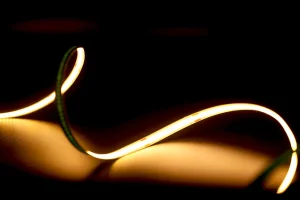In addition, LED strip lights are known for their energy savings because they use less power to run due to its efficiency, low heat production and a very long life expectancy. On average, LEDs takes lower wattage generally 4 to 20 watts per metter that depends upon the grade of brightness and colour. LEDs use up to 80% less energy than incandescent bulbs, which draw approximately around 60 watts pre lumens, benefitting home and businesses owners in more ways that simply the ROI of an investment. A 2022 energy study concluded that over the year, lighting could consume roughly one-third less electricity if households in it substituted normal light sources for LED strips.
LEDs convert electricity to light over 80% more efficiently than incandescent lights which indirectly release heated energy as visible light (incandescence) and nearly all of them use no mercury. For instance, traditional bulbs give off 90% of the energy they consume as heat while LEDs only waste between to 5-10%, which drastically reduces your total consumption and output in terms of heat. This efficiency helps lower the cost of air conditioning in warm environments, as LEDs tend not to produce so much heat into that space. This is especially useful in commercial usage where light energy can be extensively used; an energy analysis report from Business Insider shows that businesses upgrading to LED strip lights have up to 40% discount at the cost of overall electricity consumption.

Another energy-saving benefit of LED strip lighting is its dimmable functions. Users can vary brightness levels to manage energy output as needed, saving power by not using full-brightness when its unnessasary. Cut LED brightness in half, for instance, requires a roughly 50-percent reduction of power from that point on—extremely efficient in ambient lightning applications. Industry statistics show that the user can save a 10-20% sum on lighting costs and assuming business users of dimmable LED lights to give flexibilityfrom different options while not incurring larger expenses.
The longevity of the strips also plays a part in saving energy, as they can be expected to last up to 50,000 hours before ever needing replacement. This long lifespan means less waste related to the manufacturing and disposal of lighting products, as well a reduced energy needed in making them. On the other hand, incandescent bulbs clock about 1 hour and will need to be replaced up to 50 times more often than LEDs. The U.S. Department of Energy says that if LEDs took over 100 percent market share by 2030, they would save about 348 terawatt-hours (TWh) -- a move with potentially huge implications in terms of environmental and monetary cost savings.
For homes and businesses, an energy efficient low cost LED Strip Light is a viable option. Due to the inexperience, LED strip light are very energy efficient and long lasting.